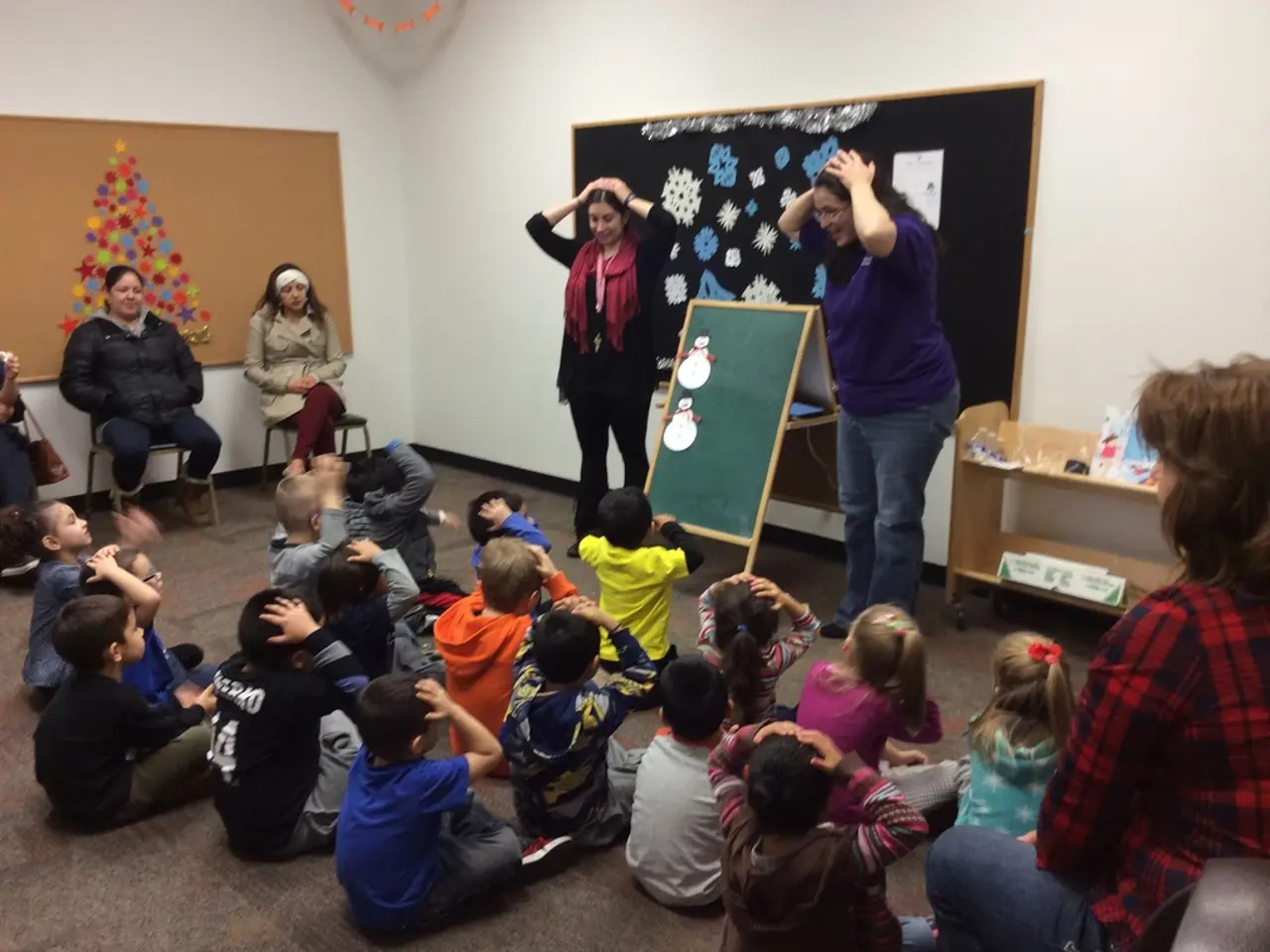Obstacles and Remedies in Nepal's Educational Structure: Perspectives and Suggestions
Improving Education in Nepal: A Journey Towards a Brighter Future
In Nepal, the landscape of education is undergoing a significant transformation. Urban areas, such as Kathmandu, have seen a marked improvement in student engagement and academic performance thanks to the introduction of digital classrooms. However, challenges remain in making quality education accessible to all, particularly in rural areas.
One of the key challenges is low academic performance and psychosocial problems. Many Nepali students struggle with core subjects like Mathematics, Nepali, and Science, with only about 35–48% achieving grade-level competence by grade 5. Behavioral issues, such as bullying and learning difficulties, also affect learning quality and retention.
The current exam system, which emphasizes memorization, is another hurdle. This exam-centric, rote learning culture discourages deep learning, creativity, and problem-solving skills, driving students away from applied knowledge and hindering their preparation for global competitiveness.
Limited educational funding is another issue. Public spending on education remains around 2.9% of GDP, well below the target of 6%, limiting resources for infrastructure, teacher development, and curriculum improvements.
Teacher training and support gaps also pose a problem. There is a shortage of adequately trained teachers, especially in rural and tribal areas, hampering the implementation of multilingual education policies and guidance counseling services that could support students academically and emotionally.
The digital divide is another challenge. Only about 57% of schools have computers and only 54% have internet access, restricting access to digital learning, especially in remote areas, which undermines modern education approaches.
Addressing these challenges is crucial for enhancing educational quality, accessibility, and relevance in Nepal. Actionable solutions include reforming the exam system to focus on open-ended questions, critical thinking, and real-world problem-solving tasks. Strengthening guidance and counseling services for teachers can help address psychosocial and behavioral challenges. Increasing public spending on education towards the recommended 6% of GDP can enable infrastructure upgrades, teacher training programs, curricular reforms, and digital resource procurement.
Expanding vocational training opportunities within schools and improving bilingual or mother-tongue instruction can also help. Enhancing ICT infrastructure with reliable computers and internet connectivity in all schools and providing training for teachers to use digital tools effectively can give students access to global educational resources.
Policy coordination and implementation, ensuring coherent implementation of policies with monitoring, periodic evaluation, and inclusion of local contexts, can overcome regional disparities in resource allocation and adherence to reforms.
International partnerships and aid from organizations like UNICEF and the World Bank can supplement government resources for education. Regular assessment of ongoing initiatives helps identify challenges early and allows timely adjustments to improve effectiveness.
Simple acts, like ensuring punctuality and involvement in school activities, can significantly influence a child's attitude towards education. Providing a quiet and organized home space can enhance learning outcomes for children. To create a study-friendly environment, teachers should tailor lessons to accommodate students with different learning paces and needs.
In rural areas, community school initiatives, such as the one in the Terai region that enrolled over 500 students without access to formal education, are proving successful. Scholarships and financial aid specifically for girls can help address gender disparities in education. To encourage regular attendance, parents should help with school projects and allocate time for homework.
The future of education in Nepal is promising, paving the way for a more educated and equitable society. The Nepalese government has introduced community school programs to provide free education, uniforms, textbooks, and meals to students in rural areas. Partnerships between the government and NGOs can drive sustainable solutions, particularly in underserved regions.
Digital classrooms equipped with technology have been implemented to modernize learning and make it more engaging. However, the World Bank report revealed that just 40% of rural schools in Nepal have electricity, in stark contrast to 90% in urban schools. In urban areas, digital classrooms have been implemented in select schools, with interactive whiteboards, projectors, and e-learning tools.
Providing a supportive environment, fostering open communication, and communicating the long-term benefits of education can inspire children to stay motivated. Building strong relationships with students and encouraging them to ask questions can foster curiosity and a love for learning.
In conclusion, addressing the challenges in improving the quality and accessibility of education in Nepal requires a multi-faceted approach. By implementing the aforementioned solutions, Nepal can create a more equitable and educated society, equipping its students for future success and national development.
- The introduction of digital classrooms in urban areas like Kathmandu has improved student engagement and academic performance.
- However, challenges remain in making quality education accessible to all, particularly in rural areas, due to low academic performance and psychosocial problems.
- Many Nepali students struggle with core subjects like Mathematics, Nepali, and Science, with only about 35–48% achieving grade-level competence by grade 5.
- Addressing these challenges is crucial for enhancing educational quality, accessibility, and relevance in Nepal, and reforming the exam system is one such solution.
- International partnerships and aid from organizations like UNICEF and the World Bank can supplement government resources for education.
- Providing a quiet and organized home space can enhance learning outcomes for children, and ensuring punctuality and involvement in school activities can significantly influence a child's attitude towards education.
- In rural areas, community school initiatives, scholarships for girls, and encouragement for regular attendance can help address gender disparities and improve educational opportunities.
- To create a study-friendly environment, teachers should tailor lessons to accommodate students with different learning paces and needs. Digital classrooms equipped with technology have been implemented to modernize learning and make it more engaging, but challenges such as electricity supply remain in rural schools.




